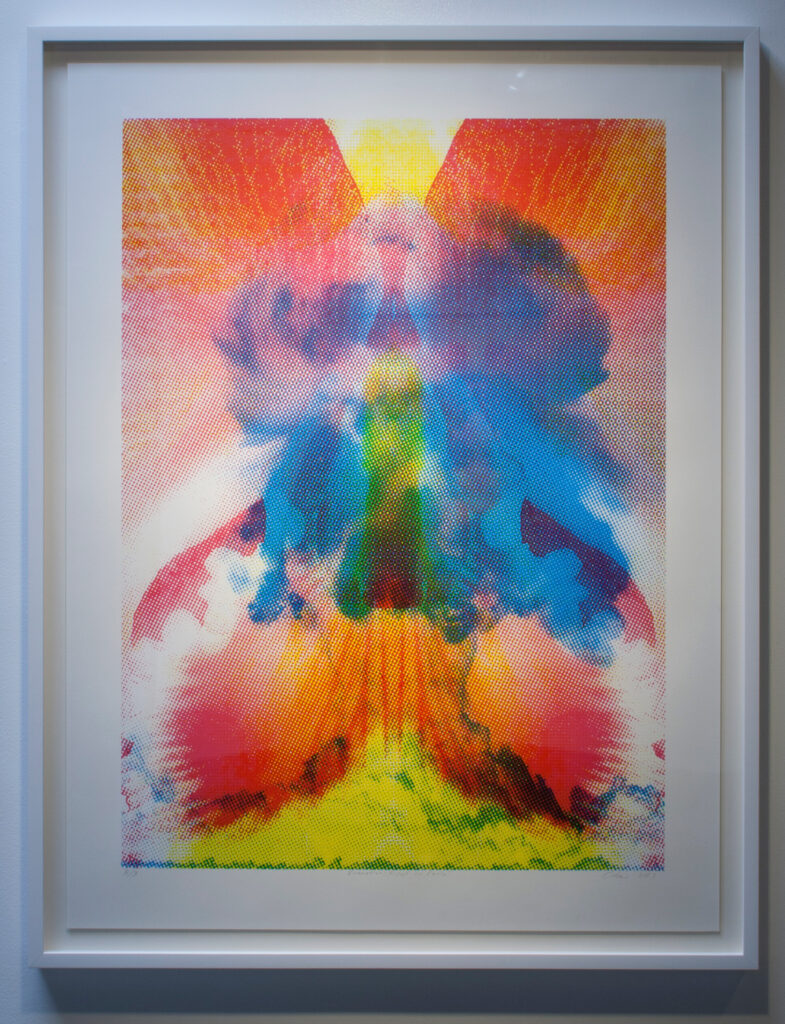
Clovis Blackwell works in layers of color, thematically focusing on redemption and transformation amid apocalyptic images of change. If you haven’t quite grasped that, all you need to do is look at lovely yet unsettling works that Blackwell says were “inspired a lot by my childhood during the late Cold War, when the fears of nuclear war collided with sci-fi/fantasy and 80’s pop-culture.” He adds “A lot of the way I was exposed to this reality around me was through this rehashing of heroic myths often in a post-apocalyptic setting. In grad school I was exposed to Joseph Campbell and began to employ this apocalyptic imagery to my explorations of suffering/transformation.”

His layers of screen printing are inspired, he says, by William Burroughs and his use of the cut-up method. “There may be some differences between our intents, but that process has stuck with me since learning about his work during my undergrad.”

Blackwell’s work has evolved over the years, but one constant is his sense of being deeply connected to his art, and through it, seeking to express an idea important to him personally. “In the early 2000’s I began [to be] pretty ill with rheumatoid arthritis, and then had some other family losses over the next few years. It was an intense and painful time for me, and the work that came out of it was exploring suffering, and the feelings I had of being incapacitated or even incarcerated in my own body. That work was self-portraiture using pencil drawing and gold leaf inside of found boxes.”
He terms those images “heavy and sincere” but relates that it didn’t capture is complete persona. During graduate school he began to explore ideas of invincible superheroes and super villains, which he saw as Super-Clovis and Anti-Clovis. It was an exploratory phase in his work, as he examined everything from “commerce/commercialism, Jungian psychology, comparative mythology …all still rooted in coming to terms with how I dealt with suffering. Like the previous body of work, I was employing my own body/image, but doing so in a wide variety of media: screen printing, internet art, photography, performance art, sculpture, installation, merchandise.”
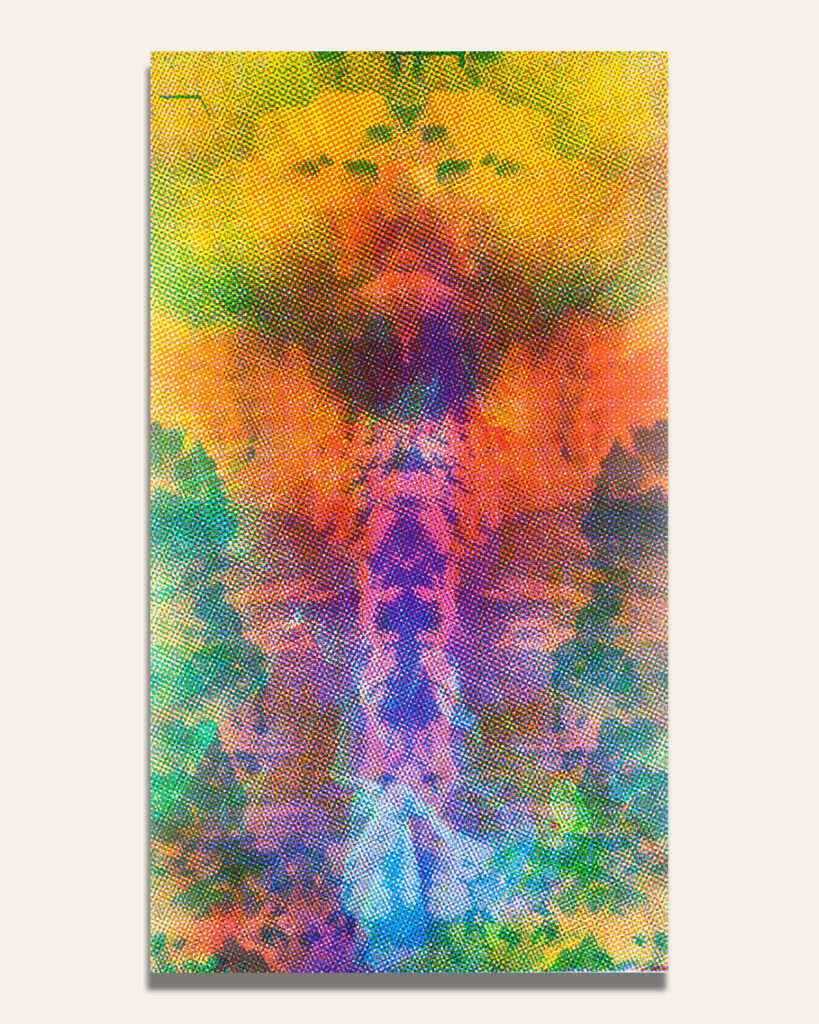
When his son was born, Blackwell saw another significant change in his life, and while he joked that his own world had ended, he stopped using his own image and turned to work that had more commonality with viewers, yet still examining the idea of suffering or loss leading to transformation. “This coincided with further reading of Joseph Campbell and a more detailed examination of my childhood, trying to make sense of growing up during that unique time. In 2010, I started working with the mushroom cloud by drawing it in bright floral colors. That year I also began teaching screen printing at a local university and so I focused my creative efforts into this discipline in order to improve my mastery of it,” he attests.
Most recently, he’s begun to mirror his printer layers either “on a vertical axis, or by adding more and more layers to further obscure the image. I really enjoy the ‘Rorschach effect’ that happens from the symmetry, and especially the response from my audience—I love to hear what people see into the work,” he attests.

He has also worked images using a lush complexity of beads, a medium he attests that he loves, and plans to use again.
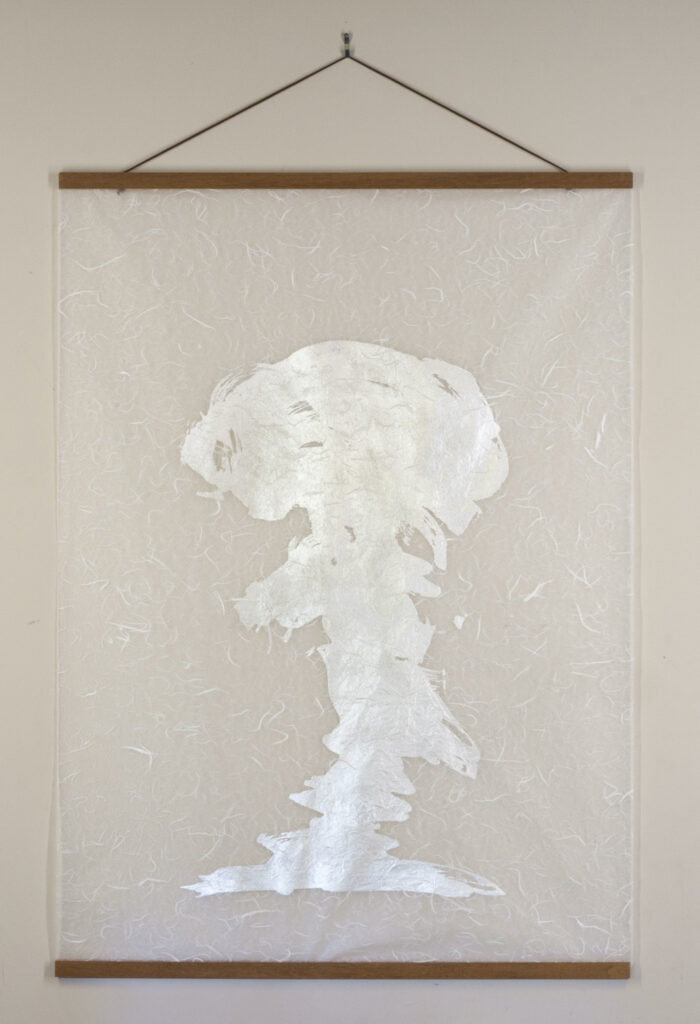
He hopes that through his work, he can guide viewers to “reach conclusions that were helpful to me. That we sometimes go through painful experiences, but that we are not alone in this, that it is a universal experience, and that if we are open to it, we can change and grow through it. I try to make my work pretty for this reason. To make it easy to look at.” Ultimately, he’d like those viewing his work to be able spend time with it, and “absorb the idea of transformation into a daily routine.”
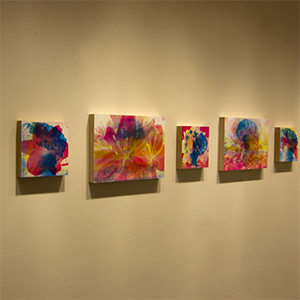
Blackwell thinks of his art in cycles. “I might at times explore the highs or the lows of transformation and redemption both equally important parts of a cycle. Joseph Campbell wrote about Emanations and Dissolutions, and I’ve included these terms in the titles for my pieces. I define them in this way: Emanations are things coming into being, and Dissolutions are things coming undone. This cycle may be as small as a delicate flower, as large as the universe itself, or it may be our own lifespan. This gives me lots of room to play while staying within these thematic bounds.”

Using images of flowers and nuclear explosions are both lovely and potent takes on apocalypse and change. Blackwell explains these choices as something he feels compelled to make. “When I started working with the mushroom cloud image we seemed to be at a low point with nuclear proliferation, but then things heated up with Russia, Iran, North Korea, and China…so that changed the context of already very loaded imagery. This may have factored into my use of that vertical symmetry, which obscures the mushroom cloud imagery a bit.”
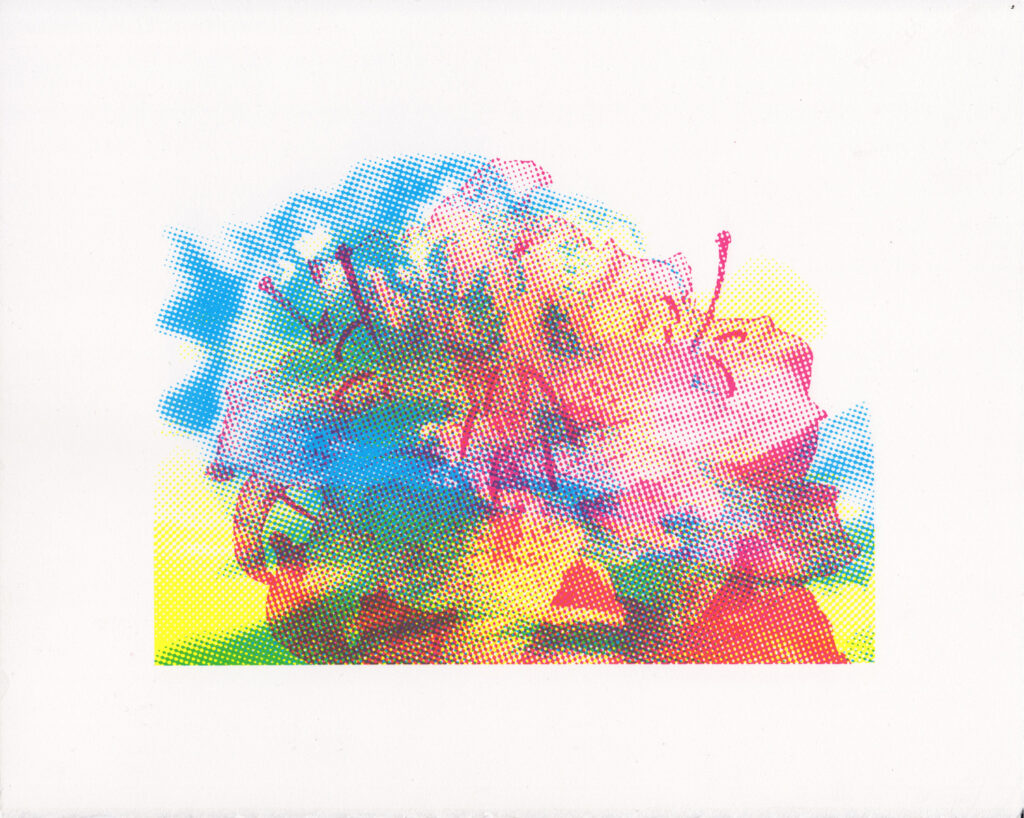
Despite expressing fervent hopes for lasting and positive changes in society, he is aware that the world has to some extent caught up with his art. “Now we’re in what feels like an actual apocalyptic event, and so I suppose there’s some potential for timeliness. I do hope that we can come out of this as a society and make some lasting and positive changes.”
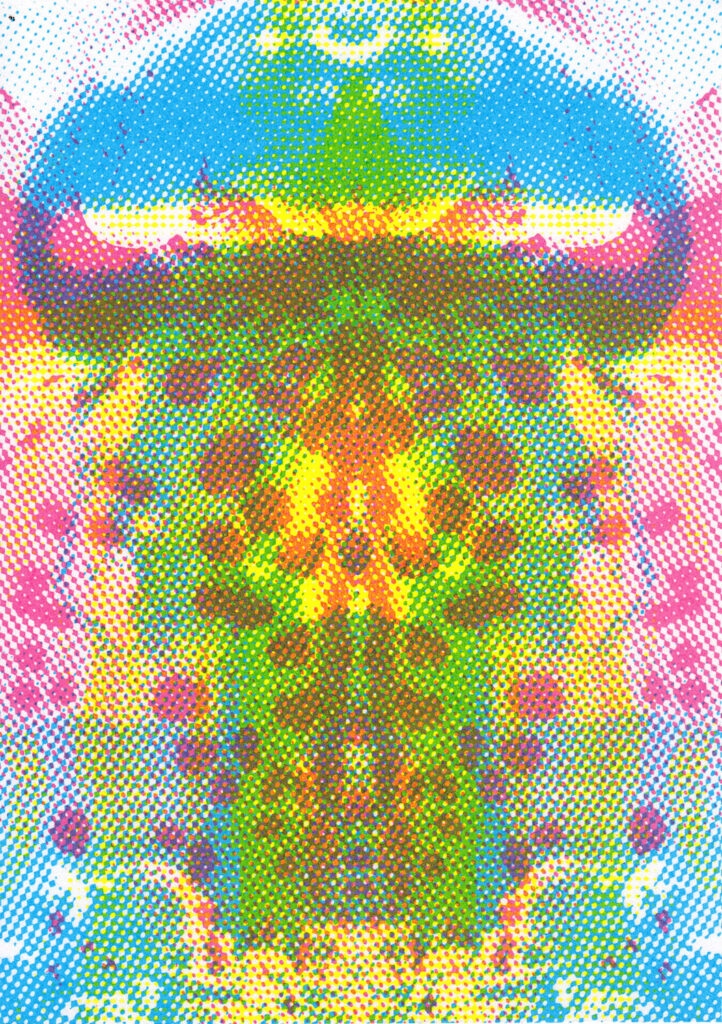
Blackwell’s work is immersive and dream-like, a blend of dreamy evolution and a transition point from nightmare to positive awakening. He thinks of himself as an interdisciplinary artist despite a focus on screen printing.
“I’m really driven by process and learning new ways to make art, and the specific contexts each disciple brings, is always exciting to me. Screen printing keeps challenging me though, so I keep going deeper. Honestly, no other medium has held so many continuous surprises for me.”

Blackwell’s compelling, redemptive work can be viewed in an upcoming solo show in 2021 with Shoebox Projects; don’t miss.
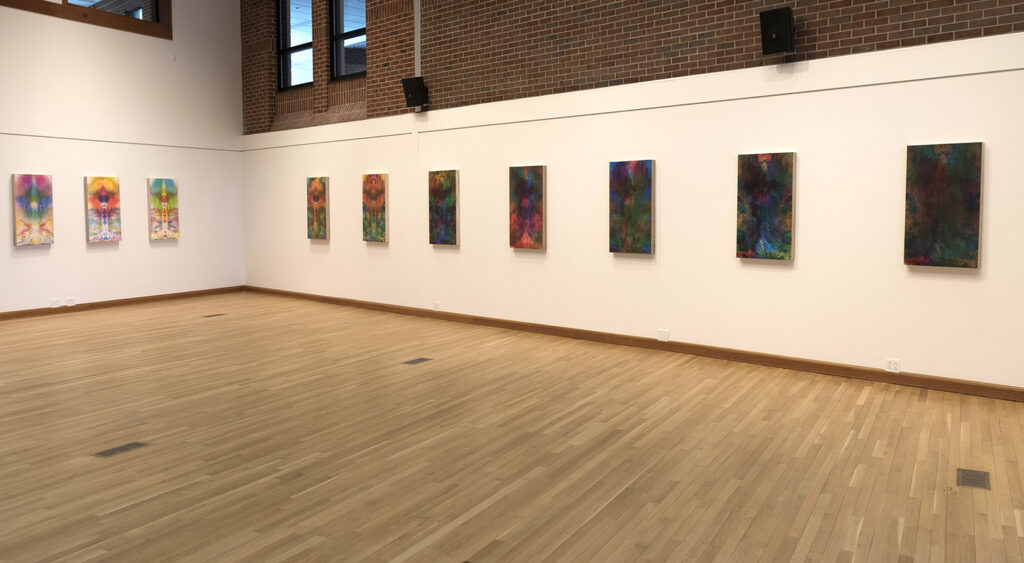
- Genie Davis; photos provided by the artist


